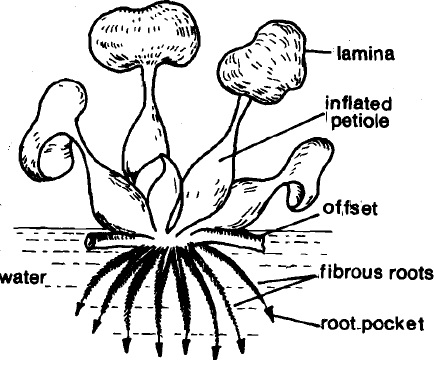Water Adaptations
After becoming familiar with the two kinds of water stresses you would like to know about the adaptations in plants and animals which enable them to survive under conditions of water stress Adaptations in Plants Hydrophytes: Hydrophytes are those plants which grow in aquatic habitats like lakes, ponds, rivers, sea. According to their habitat they are further divided into the following categories.
Free floating plants: These plants remain in contact with water and air, but not with substratum. They float freely on the water surface. Leaves in some of these plants are very minute, while others are quite large. Some of the free floating hydrophytes are WolMa, Lemna, Spoirodella, Azolla, Salvinia, Pistia and Eichhornia (Figure shown below).

Rooted plants with floating leaves: These plants grow on margins and in shallow water bodies. Roots of these hydrophytes are fixed in mud, but leaves have long petioles which keep them floating on the water surface. The remaining parts of the plant except leaves, remain in water. Some of the rooted hydrophytes are Nymphaea, Nelumbo, Trapa, and Marsilea (Figure shown below).

Submerged floating plants: These plants remain in contact with only water, being completely submerged in water and are not rooted in the mud. Their stems are long and leaves generally small. Some of the examples are Ceratophyllum and Utriculalria.
Rooted submerged plants: These hydrophytes are found completely submerged in water but remain rooted in soil. Hgdrilla is one of the examples which is a slender weed with fibrous roots.